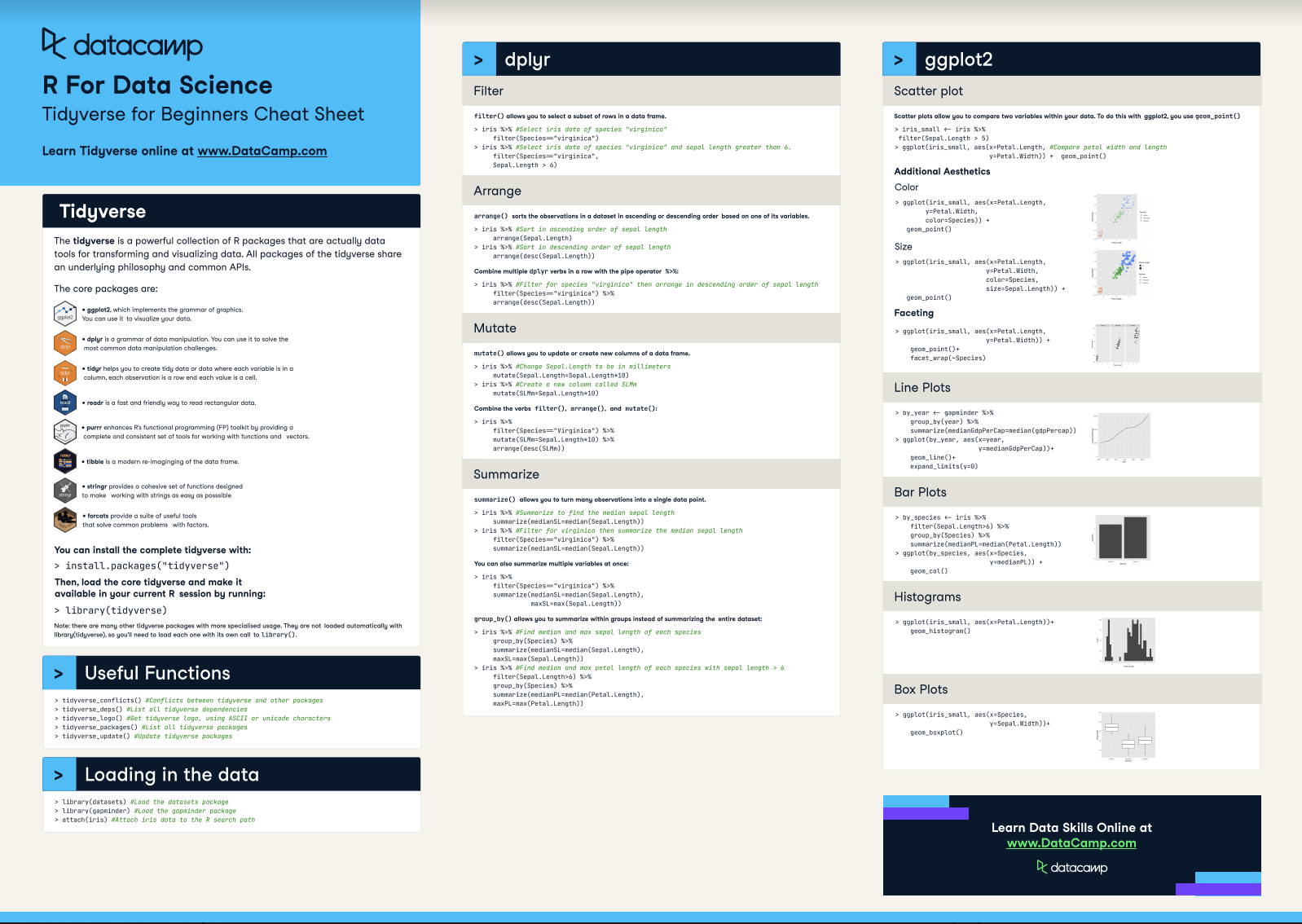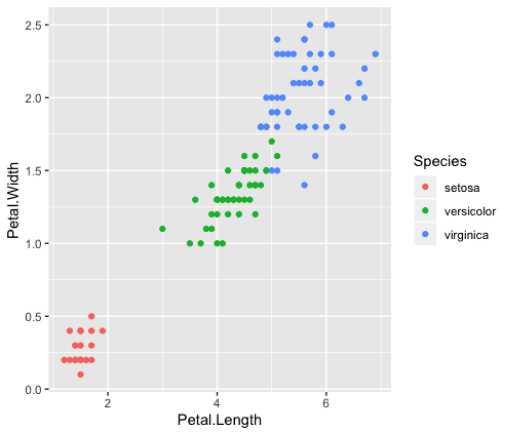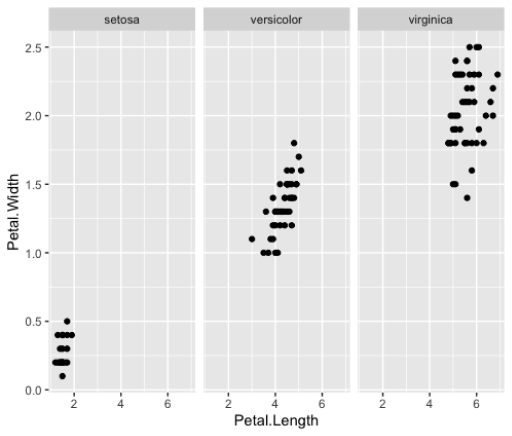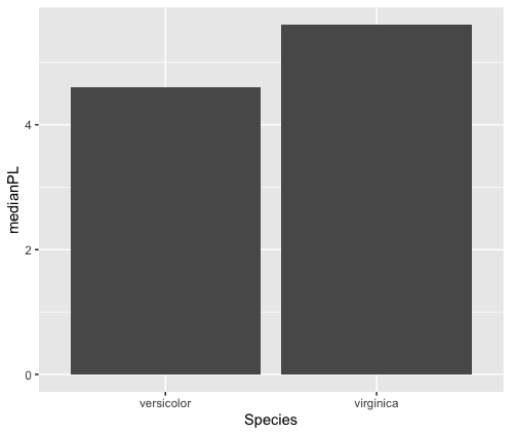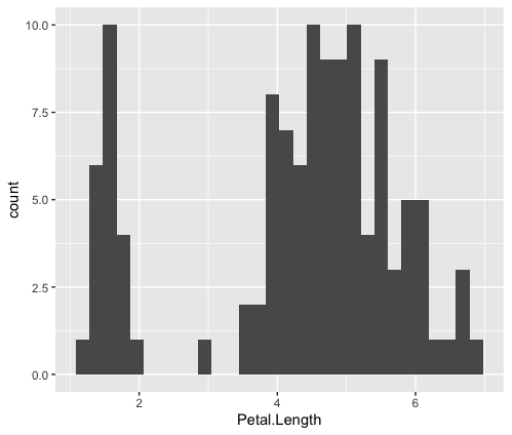Tidyverse Cheat Sheet For Beginners
This tidyverse cheat sheet will guide you through the basics of the tidyverse, and 2 of its core packages: dplyr and ggplot2!
Updated Aug 2021 · 7 min read
RelatedSee MoreSee More
Merging Data in R
Merging data is a common task in data analysis, especially when working with large datasets. The merge function in R is a powerful tool that allows you to combine two or more datasets based on shared variables.
DataCamp Team
4 min
Scatterplot in R
Learn how to create a scatterplot in R. The basic function is plot(x, y), where x and y are numeric vectors denoting the (x,y) points to plot.
DataCamp Team
Operators in R
Learn how to use arithmetic and logical operators in R. These binary operators work on vectors, matrices, and scalars.
DataCamp Team
4 min
Axes and labels in R
Improve your graphs in R with titles, text annotations, labelling of points, minor tick marks, reference lines, custom axes, and a chart legend.
DataCamp Team
4 min
How to Transpose a Matrix in R: A Quick Tutorial
Learn three methods to transpose a matrix in R in this quick tutorial
Adel Nehme
